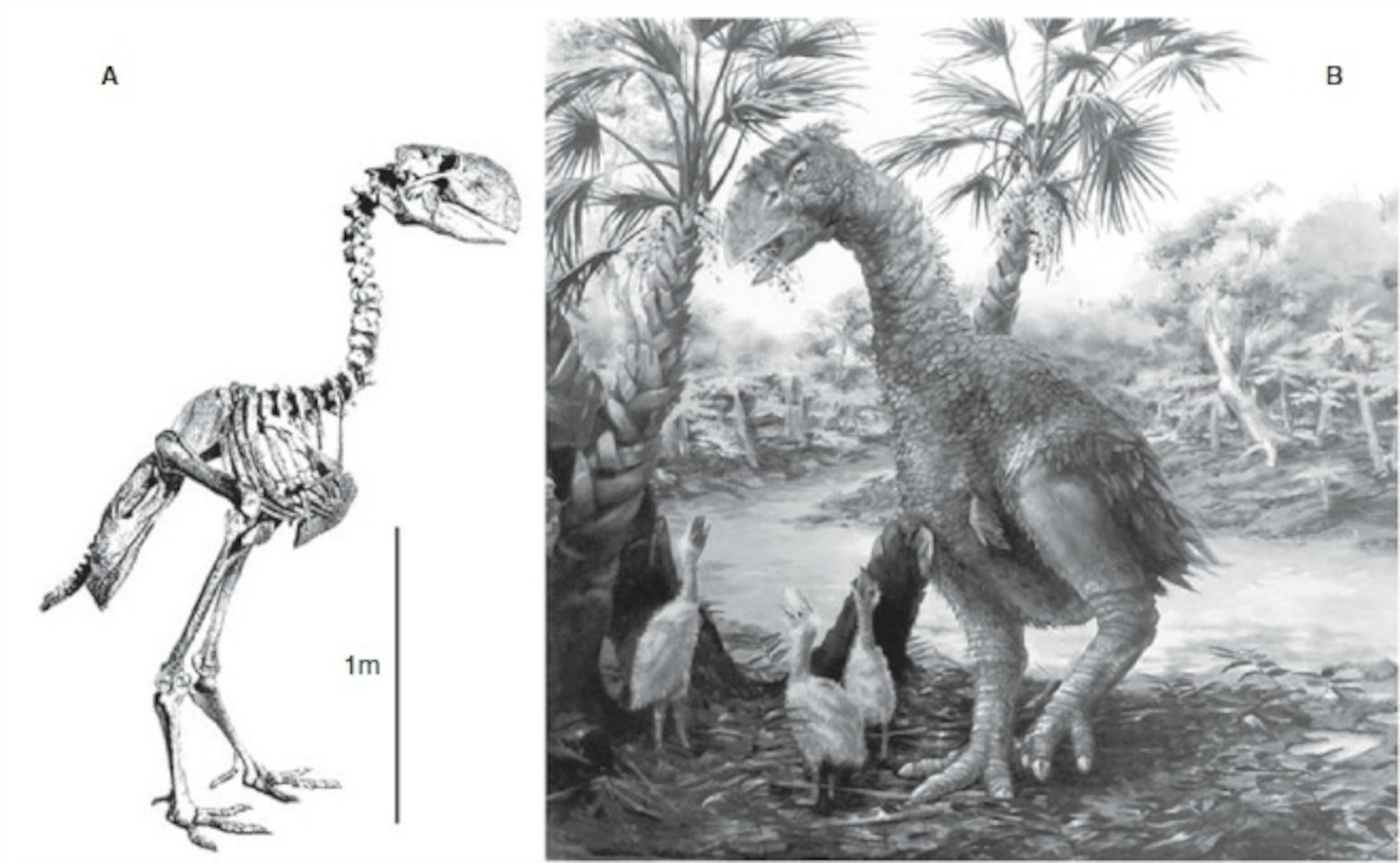The reign of the dinosaurs came to a catastrophic end 66 million years ago. That’s the common trope, anyway – a holdover from before we recognized that at least one feathery lineage survived and proliferated after the K/Pg devastation. We still live in the Age of Dinosaurs – a 230 million year old success story carried on by modern birds.
Still, even today’s birds seem to pale in comparison to their long-lost relatives. In the Eocene world that emerged from the vestiges of the Late Cretaceous, giant avian dinosaurs left their mark on the landscape. I mean that literally. In the latest issue of Palaeontology, Western Washington University paleontologist George Mustoe and co-authors present a set of several 53 million year old tracks made by an enormous bird that once strode across North America.
Paleontologists have known about North America’s giant prehistoric birds since the late 19th century. In 1876, irascible fossil specialist Edward Drinker Cope described the large, flightless Diatryma from bones found in New Mexico, and a more complete skeleton of the same bird was later found in Wyoming. (A similar avian found in the Eocene rock of Europe, Gastornis, has been proposed as a senior synonym of Diatryma, but no one has actually made a well-supported case that the birds truly belong to the same genus.) When reconstructed, the deep-beaked bird stood over six feet tall, and paleontologists presumed that this prodigious avian must have hunted tiny dawn horses and other small mammals which skittered through the warm Eocene forests.
A 1991 paper by paleontologists Larry Witmer and Kenneth Rose backed-up the bird’s bloodthirsty reputation. The skull of Diatryma was overbuilt for plucking leaves or breaking open tough plant food, they argued, and might have been better suited to breaking bones. But other experts argued that the same stress-resistant skull features could have allowed Diatryma to crack seeds and nuts rather than bone, and that the big bird lacked features linked with carnivory seen in the predaceous, South American “terror birds.” Even now, we really don’t know what Diatryma was feeding onwe really don’t know what Diatryma was feeding onwe really don’t know what Diatryma was feeding on, but, Mustoe and colleagues argue, the new footprint evidence hints that the bird probably wasn’t chasing down Eohippus with wild abandon.
The footprints featured in the new study were discovered in the wake of a 2009 landslide in northwestern Washington’s Chuckanut Formation. The geological slip exposed various mammal and bird tracks preserved in the 53 million year old sediment of an Eocene river which bordered a subtropical forest. Among the lot were eighteen large, three-toed imprints. “In rocks of Mesozoic age,” Mustoe and colleagues write, “tracks of this size and shape would likely be interpreted as having been made by a small dinosaur.” Yet, in Eocene strata, the most likely candidate we know of is Diatryma.
Like the majority of trace fossils, we can’t be absolutely certain that Diatryma made the Chuckanut Formation tracks. The size, shape, and age of the footprints indicate that Diatryma is a possible candidate for a trackmaker, and presently the most likely one, but there’s always the possibility that the footprints were made by an as-yet-unknown bird. Given that the skeletal remains of such a contender have not yet been discovered, though, referring the tracks to Diatryma is a reasonable hypothesis.

If the attribution is correct, Diatryma did not have heavily-taloned feet adapted for impaling live prey. The trackmaker’s foot was flat, with relatively broad toes and tiny triangular claws. This matches the foot anatomy of Diatryma, despite various artistic interpretations to the contrary. Furthermore, broad feet supported by a heel pad suggests a walker rather than a swift runner. While not definitive dietary proof, the bird’s stout foot anatomy may indicate that Diatryma was indeed an herbivore, or only consumed meat as a scavenger. Even though my childhood self was enthralled by illustrations and stop-motion videos of Diatryma pouncing on hapless Eocene mammals, the hefty avian was more Big Bird than Deinonychus.
For more information on these tracks and Diatryma, see this 2010 blogpost from Northwest Geology Field Trips.
References:
Mustoe, G., Tucker, D., Kemplin, K. 2012. Giant Eocene bird footprints from northwest Washington, USA. Palaeontology 55, 6: 1293-1305
Witmer, L.; Rose, K. 1991. Biomechanics of the jaw apparatus of the gigantic Eocene bird Diatryma; implications for diet and mode of life. Paleobiology, 17 2: 95-120

